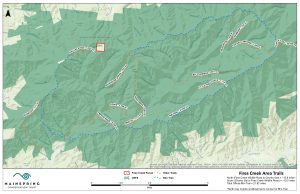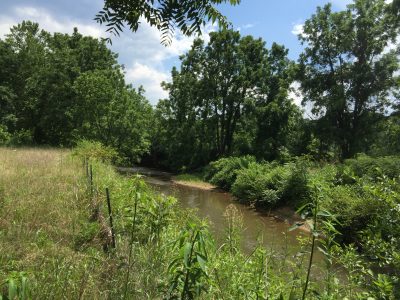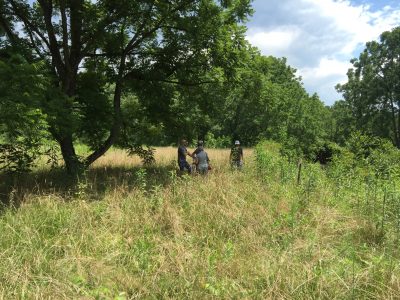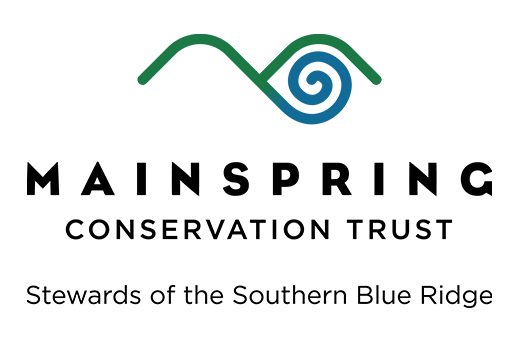October 3, 2017 – A major pledge to Mainspring Conservation Trust places the regional nonprofit near their goal to conserve private property in Cherokee and Clay counties that surrounds U.S. Forest Service.
conserve private property in Cherokee and Clay counties that surrounds U.S. Forest Service.
Fred and Alice Stanback, North Carolina’s leading environmental donors based in Salisbury, have committed $500,000 to Mainspring for the purchase price of 50 private acres along Laurel Creek, a tributary to Fires Creek. Fires Creek is designated as an Outstanding Resource Water. Mainspring, a land trust serving the six western-most counties in North Carolina, is currently under contract with four landowners to purchase the land. Prior to private ownership, the property contained more than 1/3 mile of popular Fires Creek Rim Trail.
Mainspring will hold the property before eventually transferring it to the U.S. Forest Service, to become part of the Nantahala National Forest.
“Mainspring is acquiring the property for the appraised value, and we are thankful the Stanbacks, who are passionate about protecting the places we love in North Carolina, are supporting this project in such a tremendous way,” says Executive Director Sharon Taylor. “Their contribution will make a lasting difference.”
The nonprofit still needs to raise $25,000 for transaction and maintenance costs before the contract expires in the middle of November. People interested in supporting the project can click here and have an opportunity to designate their gift for the Fires Creek project.

 While Mainspring owns the property, there are plans to address the restoration needs of the land. Jordan Smith, Land Conservation Manager for Mainspring, is seeking grant money to restore the streambank and wetland portion of the property and funds to convey a conservation easement to the State of North Carolina. (update, May 17, 2017: The Conservation Trust for North Carolina has announced a grant award to Mainspring $19,081 for this project) “Once we protect the property’s natural resources and restore the steambank and wetland areas, we hope to work with partners to develop interpretive and educational signage on the extended Greenway, as an opportunity for folks to be able to see the benefits of restoration work and land conservation.”
While Mainspring owns the property, there are plans to address the restoration needs of the land. Jordan Smith, Land Conservation Manager for Mainspring, is seeking grant money to restore the streambank and wetland portion of the property and funds to convey a conservation easement to the State of North Carolina. (update, May 17, 2017: The Conservation Trust for North Carolina has announced a grant award to Mainspring $19,081 for this project) “Once we protect the property’s natural resources and restore the steambank and wetland areas, we hope to work with partners to develop interpretive and educational signage on the extended Greenway, as an opportunity for folks to be able to see the benefits of restoration work and land conservation.”
